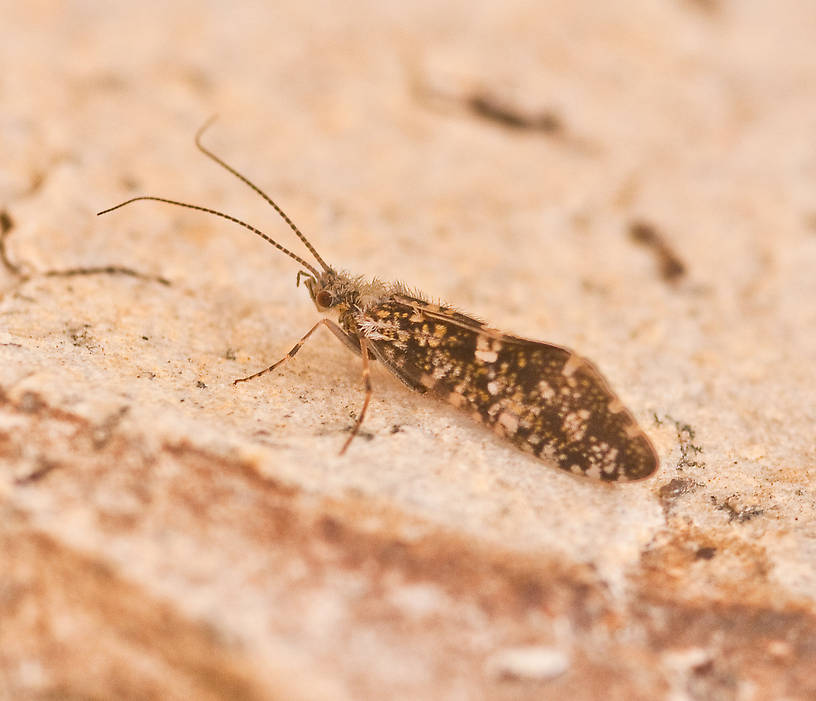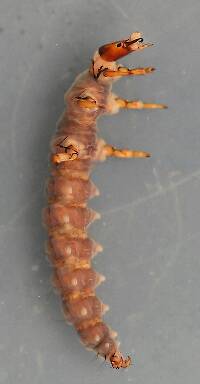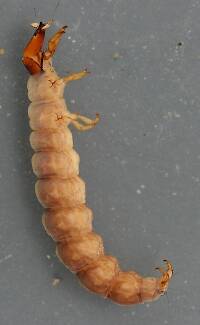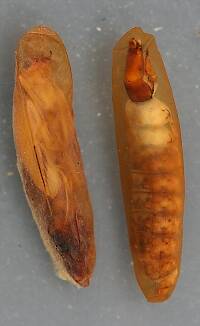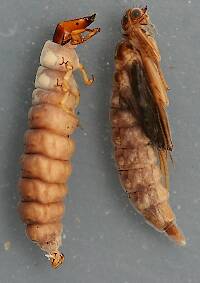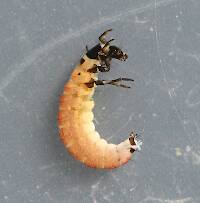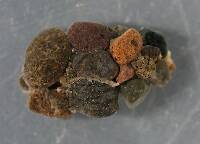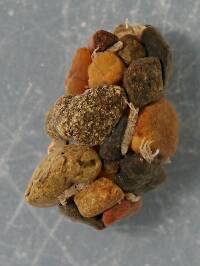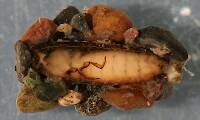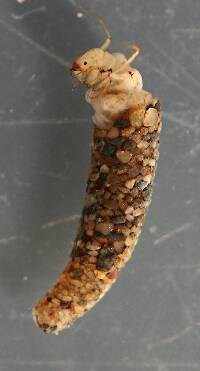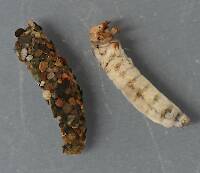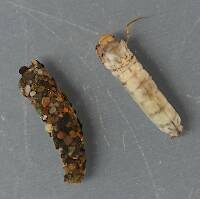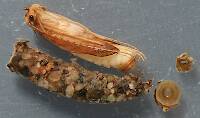
Salmonflies
Pteronarcys californica
The giant Salmonflies of the Western mountains are legendary for their proclivity to elicit consistent dry-fly action and ferocious strikes.
Featured on the forum

Troutnut is a project started in 2003 by salmonid ecologist Jason "Troutnut" Neuswanger to help anglers and
fly tyers unabashedly embrace the entomological side of the sport. Learn more about Troutnut or
support the project for an enhanced experience here.
This topic is about the Caddisfly Family Glossosomatidae
This family is one of the primitive caddisflies of the Rhyacophiloidea superfamily. However, they are not free-living like their better known cousins the Rhyacophilidae (Green Rockworm). Instead they build rounded "turtle" shaped cases that do not surround the larvae but are rather attached to the rock surface at their margins. Underneath is a sling made of secretions upon which the larvae ride, hence the common name Saddle-case Makers. There are four genera of possible interest but only one is generally recognized as important to anglers. See Glossosoma (Little Brown Short-horned Caddis) for details. The other three are so tiny that they are also called Pseudo-microcaddis.Protoptila (Tiny Spotted Short-horned Caddis) is rarely important in trout streams and is generally found in warmer, larger water than the other two genera.
Agapetus (Tiny black Short-horned Caddis) is quite common in many northern streams.
Matrioptila is an extremely tiny southern genus.
Example specimens
Litobrancha on Apr 12, 2007April 12th, 2007, 3:41 pm EDT
Jason
just wanted to spread the word about agapetus. many trout streams have healthy populations of agapetus and there is no reason that some of these species are important to early season emerger/dry fly fishing. small (#18-22) black caddis dry or emerger patterns will mimic them nicely, as well as Dolophilodes Wormaldia and Chimarra.
my colleagues are describing 12 new species of agapetus, mostly from the southeastern united states. i would encourage troutnuts to attempt to collect and rear agapetus pupae. it is pretty easy to do, find pupating cases and remove them from the rocks using forceps and into a small jar of water. If you use a jar with a small amount of water (just a little bit more than required to cover the pupae, removing the small stones around the puparium), then they will pupate in a refrigerator (preferably 60 C or so). Leave the lid loose to allow oxygen to equilibrate with the pupae. This also works for Rhyacophila, which build a similar puparium. We are describing new species of both Agapetus and Rhyacophila and it would be great to have specimens from Troutnuts!!! if interested in doing this, and it is time, email me litobrancha@yahoo.com You can send them to me in alcohol, who knows what else is out there!!!!
just wanted to spread the word about agapetus. many trout streams have healthy populations of agapetus and there is no reason that some of these species are important to early season emerger/dry fly fishing. small (#18-22) black caddis dry or emerger patterns will mimic them nicely, as well as Dolophilodes Wormaldia and Chimarra.
my colleagues are describing 12 new species of agapetus, mostly from the southeastern united states. i would encourage troutnuts to attempt to collect and rear agapetus pupae. it is pretty easy to do, find pupating cases and remove them from the rocks using forceps and into a small jar of water. If you use a jar with a small amount of water (just a little bit more than required to cover the pupae, removing the small stones around the puparium), then they will pupate in a refrigerator (preferably 60 C or so). Leave the lid loose to allow oxygen to equilibrate with the pupae. This also works for Rhyacophila, which build a similar puparium. We are describing new species of both Agapetus and Rhyacophila and it would be great to have specimens from Troutnuts!!! if interested in doing this, and it is time, email me litobrancha@yahoo.com You can send them to me in alcohol, who knows what else is out there!!!!
GONZO on Apr 12, 2007April 12th, 2007, 6:04 pm EDT
Great, Lito, another genus to add to my tying list--just what I needed! :) Just kidding pal, it's great to hear from you again! And I'll be on the lookout for Agapetus! (Actually, if Chimarra/Dolophilodes imitations work, I'm all set.) ;)
Thanks,
Lloyd
Thanks,
Lloyd
Quick Reply
Related Discussions
Topic
Replies
Last Reply
0
Apr 12, 2007
by Litobrancha
by Litobrancha
9
Mar 18, 2013
by Entoman
by Entoman
9
Jul 7, 2015
by Millcreek
by Millcreek





